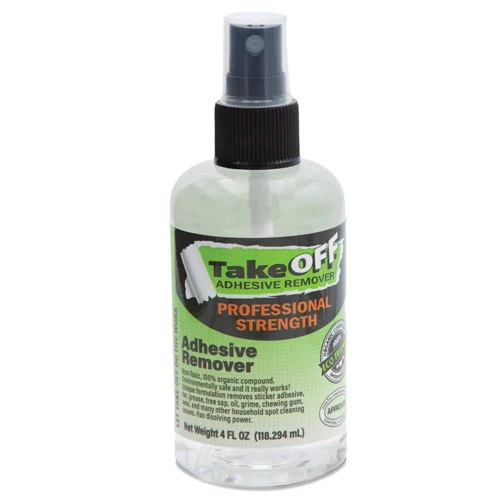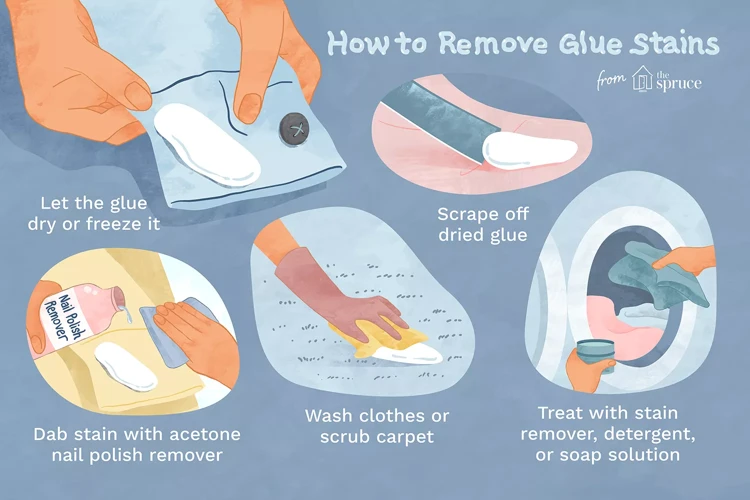Embellishing fabrics with rhinestones adds a touch of sparkle to any garment, but there may come a time when you need to remove them. The challenge of removing the glue without damaging the fabric can be quite the conundrum. This comprehensive guide is designed to help you navigate the process of rhinestone glue removal from various types of fabric, ensuring your materials are left in the best possible condition.
How to Remove Rhinestone Glue From Fabric
Assessing the Type of Glue Used
The first step in tackling the residue is to identify the type of glue. Various adhesives have different chemical compositions that require specific removal methods. Knowing whether you’re dealing with a water-based adhesive or a more robust glue such as E6000 or B7000 will guide your approach.
Preparation Before Attempting to Remove Glue
Prior to any removal attempt, prepare your workspace. Lay the fabric on a flat, clean surface and gather all necessary materials. Ensure the area is well-ventilated, especially if you’ll be using chemical solvents. Testing a small, inconspicuous section of the fabric for colorfastness is also a crucial step to avoid any surprises.
Methods for Removing Rhinestone Glue
How to Get Rhinestone Glue Off Fabric Using Common Household Items
Common household items can be surprisingly effective in fabric glue removal. One method involves using a cotton ball soaked in acetone-based nail polish remover, gently dabbing at the glue until it begins to loosen. Always proceed with caution to prevent damage to the fabric.
Specialized Removers: How to Get E6000 Out of Fabric
For robust adhesives like E6000, specialized removers may be necessary. Commercial adhesive removers are formulated to tackle these strong glues. Apply the remover according to the instructions, and use a scraper to gently lift the glue from the fabric’s surface.
Natural Solutions for Fabric Glue Removal
If you prefer a gentler approach, consider natural solutions such as applying a mixture of warm water and mild dish soap. Allow the solution to penetrate the glue before attempting to scrape it off. Another option is to create a paste using baking soda and water, which can help dissolve the adhesive.
How to Remove B7000 Glue From Clothes
Step-by-Step Guide for B7000 Glue Removal
B7000 glue is known for its strong bond, but it’s not invincible. Begin by applying a solvent designed for this type of adhesive, allowing it to sit for the recommended time before gently peeling the glue away. A plastic scraper can aid in this process without harming the fabric.
Can Fabric Glue Be Removed Completely?
Can You Remove Rhinestones From Clothing Without Damage?
Rhinestones can often be removed without causing harm to clothing, but it depends on the fabric and the glue used. It’s important to follow the appropriate steps and use the correct methods to ensure the integrity of the garment remains intact.
Dissolving Glue on Fabric: Techniques and Tips
Using Heat to Weaken Glue Bonds
Applying heat can weaken glue bonds, making removal easier. A common technique is to place a cloth over the glue spot and press with a warm iron. The heat will soften the adhesive, allowing you to peel or scrape it off with more ease.
E6000 Glue Remover Alternatives
If you don’t have a commercial E6000 glue remover on hand, alternatives include using a mixture of vinegar and water or applying rubbing alcohol. These substances can break down the adhesive’s structure, aiding in its removal from the fabric.
Additional Tips for Glue Removal From Fabric
Precautions and Safety Tips
When dealing with chemicals or solvents, wear gloves to protect your skin and work in a well-ventilated area. Be sure to read all labels and follow the manufacturer’s safety guidelines to prevent any accidents.
Aftercare: Post-Removal Fabric Care
After successfully removing the glue, treat the fabric with care. Wash the garment according to its care label instructions, and consider using a fabric softener to restore its feel. Allow the fabric to air dry, avoiding high heat that could set any remaining residue.
Are you struggling with stubborn adhesive residues on various surfaces? While you’re figuring out how to remove rhinestone glue from fabric, you might also encounter other challenging scenarios where you need to get rid of glue. For those tough-to-clean surfaces, we’ve got you covered with comprehensive guides. Learn how to tackle carpet glue on metal with our article on how to remove carpet glue from metal, or if you’re dealing with plastic surfaces, check out our tips on how to remove cement glue from plastic. And if dried wood glue is giving you a hard time on metal objects, our guide on how to remove dried wood glue from metal can help you out. With these resources, you’ll be prepared to tackle any glue removal challenge.
Conclusion: Restoring Your Fabric to Its Original State
With the right approach and a bit of patience, removing rhinestone glue from fabric is a task that can be tackled successfully. By following the methods outlined in this guide, you stand a good chance of restoring your fabric to its former glory, free of unwanted adhesive traces.

